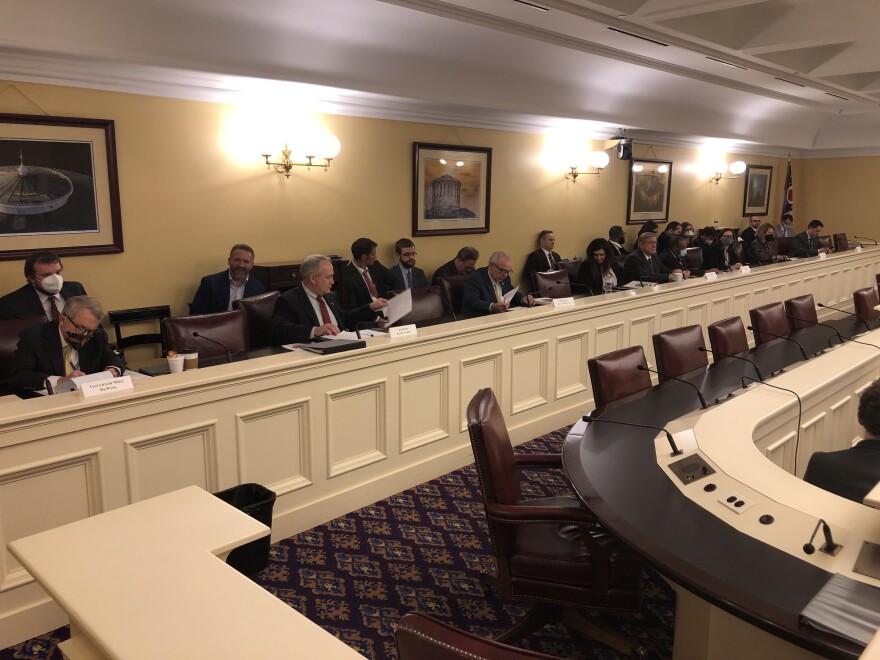The Ohio Redistricting Commission has violated a state Supreme Court order by failing to adopt a new state House and Senate district map by last night's deadline.
The panel did not come up with what the court considers a constitutional district plan, though the two Democrats on the commission tried to pass their proposal.
There was an uneasiness in the committee room Thursday where the seven members of the Ohio Redistricting Commission sat, with just hours to go before the court-ordered deadline to adopt new maps.
The commission had until midnight Thursday to come up with House and Senate maps that meet constitutional guidelines. The Ohio Supreme Court set that deadline, and ordered maps to be delivered to justices Friday morning.
Each commissioner spoke, giving their own account of how the panel has arrived at this point.
Since September, the commissioners have passed two sets of state legislative district maps and both times those maps have been found unconstitutional by the Ohio Supreme Court. Those maps passed on a 5-2 vote with support only from the commission's majority Republicans.
"We have an obligation to follow the Ohio Constitution. We have an obligation to follow the court order -- whether we like it or not, whether we agree with it or not. And three, we have an obligation to produce a map," said Republican Gov. Mike DeWine.

But the commission did not follow the court order. Instead, the Ohio Redistricting Commission adjourned with about seven hours left before the court's deadline.
Democratic members of the commission chided Republicans for failing to respond to the court order.
"This is a direct assault on our democracy and Ohio voters. And if we do not respect the legitimacy of the courts, then we are disrespecting the rule of law," said House Minority Caucus Leader Allison Russo (D-Upper Arlington).
But Senate President Matt Huffman (R-Lima) made the argument that it's not possible to follow the court's ruling on drawing new maps.
Senate President Matt Huffman (R-Lima) bringing up visual aids with printouts of specific Dem-drawn House districts repeating the question “Is this district compact?” pic.twitter.com/bRaC5M49y8
— Andy Chow (@andy_chow) February 17, 2022
"I don't believe the commission is able to ascertain a General Assembly district plan in conformity with the provisions of the Ohio Constitution and Ohio state law, nor with the federal constitution," Huffman said.
Leading up to Thursday's commission meeting, Huffman and House Speaker Bob Cupp (R-Lima) expressed uncertainty when asked if they planned to introduce new maps. In the end, the GOP leaders did not file a new proposal.
However, the redistricting commission did hold a vote to reject a plan introduced by the Democratic commission members. It failed on a party line vote.
Auditor Keith Faber (R-Ohio) and Huffman led the line of questioning in drawing criticism of the Democratic-drawn map.
Huffman asserted that the Senate maps drawn by the Democratic legislative caucuses would make it harder for certain GOP incumbents to win re-election, such as needing to move into the newly drawn district or having to represent counties they have not represented before.
Russo responded by noting that the previous districts have been widely deemed as gerrymandered, so it would be expected that new districts, under anti-gerrymandering requirements, would make it harder for some Republican incumbents to win.
Russo added that Republican commissioners should have proposed their own set of maps so the different parties could have worked on a compromise between the two.
DeWine was asked, with his experience as a former Ohio attorney general, what the implications would be for the commission to disobey a court order.
"I don't know," DeWine said with a pause. "I don't know."
There have been suggestions that the court has the ability to hold the commission accountable, such as holding members in contempt of court.
Fair district advocates who have been plaintiffs in the court challenges say they are reviewing their options.
Copyright 2022 The Statehouse News Bureau. To see more, visit The Statehouse News Bureau.




